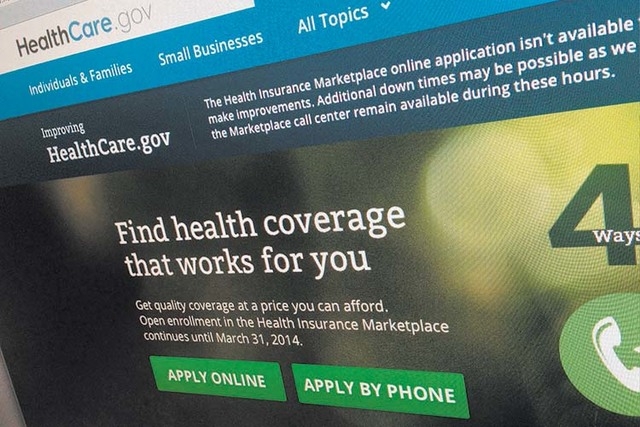Moving means not waiting for open enrollment
Open enrollment in new health insurance plans is more than three months away, but that hasn’t stopped the flood of sign-up questions into our inbox.
People who have changed addresses recently qualify to buy coverage outside of open enrollment. This week, we help one new local sort out some of her concerns.
We also tackle (once more) the dreaded Medicare prescription-drug doughnut hole.
■ Cindy Brighton recently moved to Henderson from Illinois and is looking for an insurance broker to help her sign up for coverage. She qualified for Medicaid after applying through Nevada Health Link, but she would rather have “something better” in the form of a private plan. She’s not getting a lot of return calls from brokers, except from one who told her Nevada is “revamping” plan offerings in October or November. She’s asking for our help finding a broker and understanding “changes” Nevada might be planning on.
So the first thing you need to know, Cindy, is that once you’ve qualified for Medicaid through Nevada Health Link, you’re not eligible to buy private coverage through the website. You automatically are funneled into the public insurance program. If you want to buy a private plan, you will have to do so off of the exchange, either directly through a carrier or with the help of a broker.
What’s more, although many insurance brokers have helped legions of consumers sign up for Medicaid, they don’t get paid any commission to do so. That might make it tougher to get those return calls.
The state Insurance Division does maintain a list of brokers certified to sell coverage through Nevada Health Link. To find a broker or navigator in your area, visit nevadahealthlink.com, click on “Get Assistance,” and scroll down to “Find Local Assistance.” There, you can search by ZIP code, either by scrolling through the list, or by hitting the Control and “f” buttons and typing your ZIP code into the search box.
The exchange also lists agencies that help people with face-to-face enrollments. Visit info.nevadahealthlink.com/in-person-assistance/.
It might take persistence to find help, partly because we’re in between enrollment sessions and partly because some brokers say they feel the technical glitches that have dogged Nevada Health Link have made it too costly to sell through the marketplace.
As for “revamped” plans, the Insurance Division recently released insurers’ proposed rates for 2015. It will not be clear until Oct. 16, when final plans are unveiled a month before sign-ups begin, just how different networks and deductibles might look. But for premiums, at least, the proposed changes don’t seem significant overall.
Nonprofit insurer Nevada Health Co-Op said its individual rates could drop as much as 28.6 percent or rise as much as 14.2 percent, for a proposed average change of 6.19 percent. Health Plan of Nevada, the state’s largest insurer, requested an average rate change of 8.9 percent for individuals, while the second-largest insurer, Anthem, is seeking to cut HMO rates by an average of 3.9 percent in its individual lines.
■ Ron Coleman is one in a long line of seniors writing to ask us about the Medicare doughnut hole, the prescription-drug expense gap that the Affordable Care Act is supposed to close. Ron is a little annoyed because he hasn’t seen any changes yet. He wants to know when the hole will begin to close.
You might not have noticed it, Ron, but that doughnut hole actually is a little smaller than it was. The thing is, getting rid of it completely will happen very slowly and take practically another decade.
First, some background.
Under the doughnut hole, Medicare recipients had to cover all of their prescription costs until they reached a $310 annual deductible. At $311, they began paying 25 percent of their costs. Once drug expenses hit $2,850, seniors had to pay 100 percent once again.
But if annual drug spending surpassed $4,550, recipients were on the hook for just 5 percent of the tab.
That no-coverage, no-man’s-land from $2,850 to $4,550 is the doughnut hole. And it’s been shrinking since 2010. Really.
From 2010 through 2014, recipients have paid 47.5 percent of the cost of brand-name drugs and 72 percent of the cost of generics in the doughnut hole, rather than 100 percent of everything. That slowly drops to 25 percent in 2020, when the doughnut hole officially closes. The rate of out-of-pocket costs will stay at today’s 5 percent if prescription spending exceeds $4,550.
So hang in there, Ron.




























